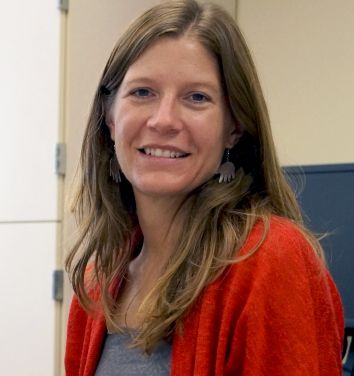
Digging Into Gender Equity
Archaeologists have a mystery on their hands, and it’s not something they dug out of the dirt. It’s this: Where are the women in academia?
Women earn more than 60 percent of archaeology Ph.D.s, and yet they represent fewer than 30 percent of archaeologists in American universities. Why is that? Do issues that plague women elsewhere in the workplace — sexual harassment and impediments to career advancement, for example — play a role?
To take a closer look at the state of gender equity in archaeology, scholars from UC Santa Barbara have organized a symposium at the Society for California Archaeology’s annual meeting March 9-12 at Yosemite National Park. “Gender Equity, Mentorship and Sexual Harassment in California Archaeology: A Diachronic and Comparative Analysis of the Public and Private Sectors,” led by Amber VanDerwarker, professor and chair of UCSB’s Department of Anthropology, will take place Saturday, March 11.
UCSB scholars, including VanDerwarker and four archaeology Ph.D. candidates, will present a series of papers that examine different aspects of gender equity in the field. Three of the presentations will focus on the results of two surveys of members of the Society for California Archaeology (SCA). Taken in 2016 and created by VanDerwarker and students Kaitlin Brown, Toni Gonzalez and Hugh Radde, the surveys focused on sexual harassment and mentorship in archaeology.
VanDerwarker explained that last year in a graduate seminar, “The Archaeology of Gender,” they discovered the disparity in graduation rates and academic positions for women. The majority, they discovered, went into cultural resource management (CRM) — non-academic work that typically involves mitigating the impacts of development. They also knew, based on two papers from 2014, that sexual harassment was a problem in the discipline, especially in field work.
“If most sexual harassment is taking place in these liminal places and most women are tracking into CRM, what does the landscape of equity and sexual harassment look like?” VanDerwarker said.
That’s what the surveys, each of which was answered by more than 400 SCA members, set out to discover.
At the symposium Brown will present on the role of mentorship in archaeology, and how it affects the paths newly minted Ph.D.s take. “If 60 percent of your students are female and only 30 percent of your professors are female, then half of those women are not getting the mentorship they need,” VanDerwarker said. “And I think that’s a very important point.”
Radde will present the survey’s findings on sexual harassment at field sites, while Gonzalez will look at the issue more broadly, comparing the experiences of women in CRM and academia. The survey revealed higher rates of sexual harassment in CRM.
In addition, Dana Bardolph, an archaeology Ph.D. candidate at UCSB who has done leading-edge research on gendered publication trends, will present on “Hearing and Reading California Archaeology: Gender, Publishing and Narrative Construction within the SCA.” Her work, including papers published in 2014 and 2016, shows that women publish at much lower rates than men.
While the surveys focus on archaeology, VanDerwarker noted that the data behind them is merely a reflection of society as a whole. “Ours is just a small piece of a much bigger collective gender equity and sexual harassment project that’s going on in the United States right now,” she said. “So I see us as a cog in this bigger research project that has huge ramifications.”



